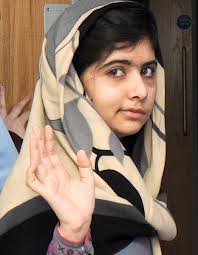In recent days, much has been written about Malala Yousafzai – the 14-year-old Pakistani girl shot in the head by the Taliban. But in 2008, when the Taliban imposed a ban on girls’ education in Pakistan’s Swat Valley, no-one had heard of the schoolgirl from Mingora.

Often in conflicts, news coverage focuses on bombing and killings. The stories of those caught up in violence are lost. So our colleagues at BBC Urdu set out to capture the impact the conflict in Swat was having on the pupils involved – their thoughts about their future, and how they were dealing with their day-to-day life.
BBC Urdu reporters made contact with teachers at a number of schools, including Malala’s father, Ziauddin Yousufzai. He ran a school in Mingora, and suggested that his own daughter could write a regular diary. But in order to reduce the risk to Malala, we agreed she would write under a pseudonym, Gul Makai.
Her weekly blog started in late 2008. It proved to be such a hit, the blog was translated into English.
Her writings were non-political, but clearly reflected her desire for female education. They mostly talked about her school, studies, life at home and friends. Neither she, nor her father was paid.
In January 2009, she wrote:
« I was getting ready for school and about to wear my uniform when I remembered that our principal had told us not to wear uniforms and come to school wearing normal clothes instead. So I decided to wear my favourite pink dress. Other girls in school were also wearing colourful dresses. During the morning assembly we were told not to wear colourful clothes as the Taliban would object to it. »
Malala’s diaries were published for 10 weeks. The diaries stopped when Malala and her family left the Swat valley before the launch of a military operation in May 2009. That was end of her association with the BBC.
After the Pakistani army regained control of Swat, Malala was able to return to Mingora later in 2009. Her father decided to disclose her real name when he nominated her for an international peace prize.
Malala began appearing on Pakistani TV news channels under her real identity, named as the girl behind the BBC Urdu blog. She was awarded a national peace prize by the Pakistani government, nominated for an international award and made several public appearances as a campaigner for girls’ rights to education. Her fame spread far beyond Pakistan, as she stared in a documentary filmed by the The New York Times.
The BBC is incredibly proud of its association with Pakistan. BBC Urdu began broadcasting in April 1949, less than two years after the country’s independence. Today, the BBC is still one of the most trusted news sources in Pakistan – precisely because we’re committed to telling all sides of any story. Malala’s is an important voice in the debate about Pakistan’s future.
